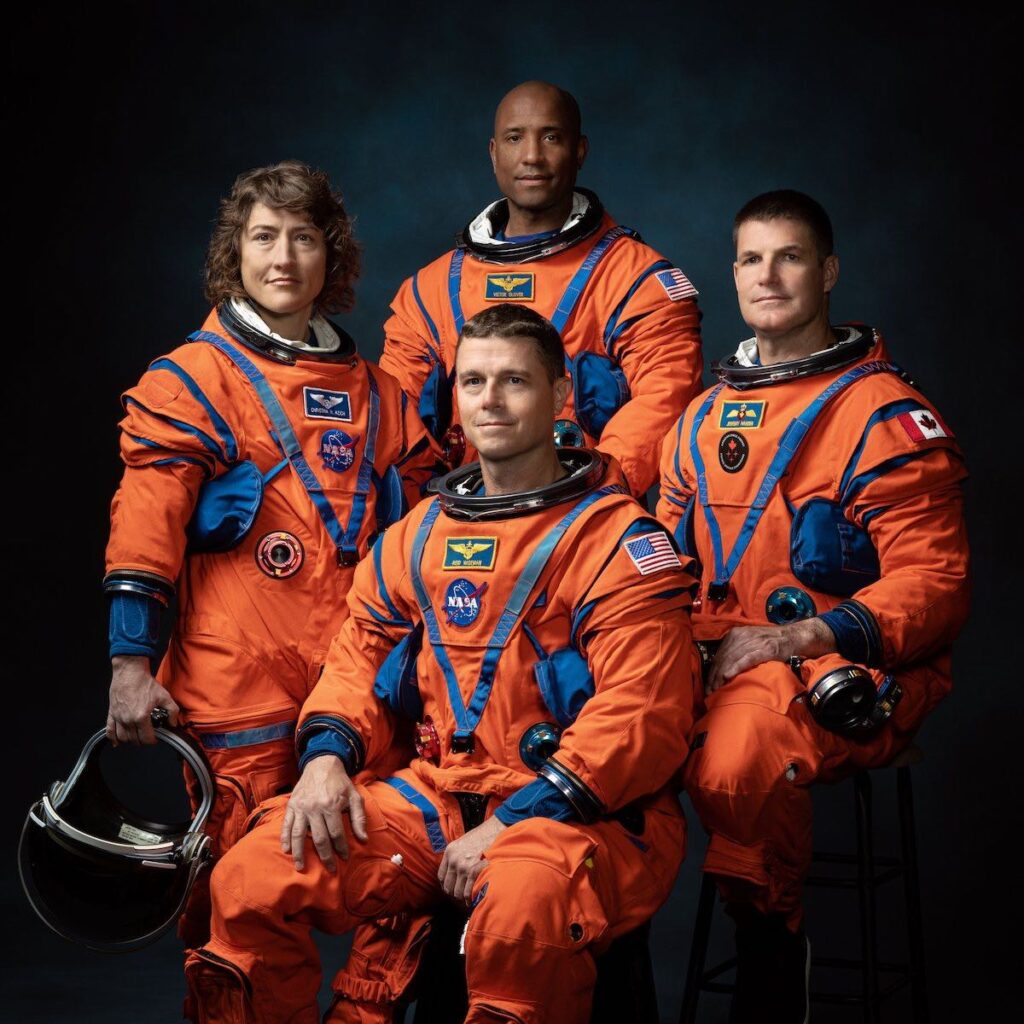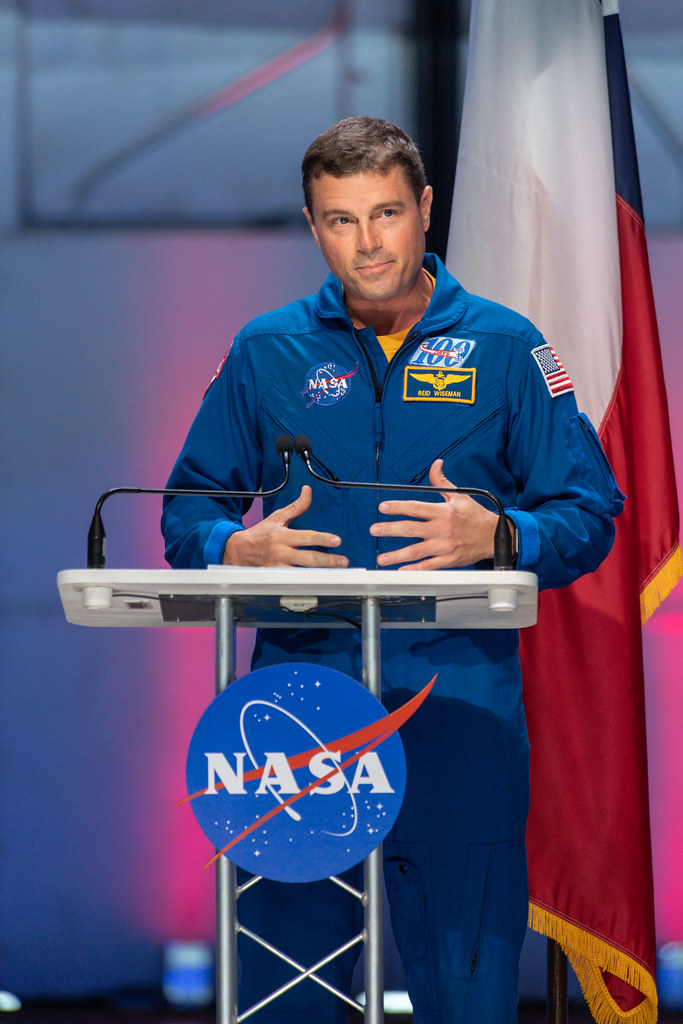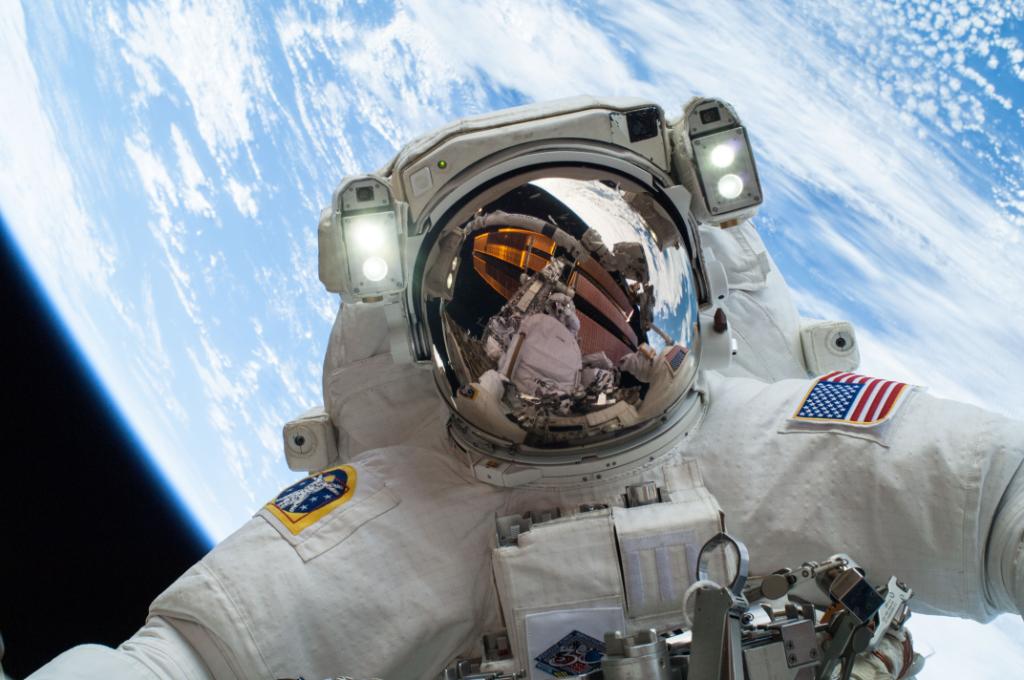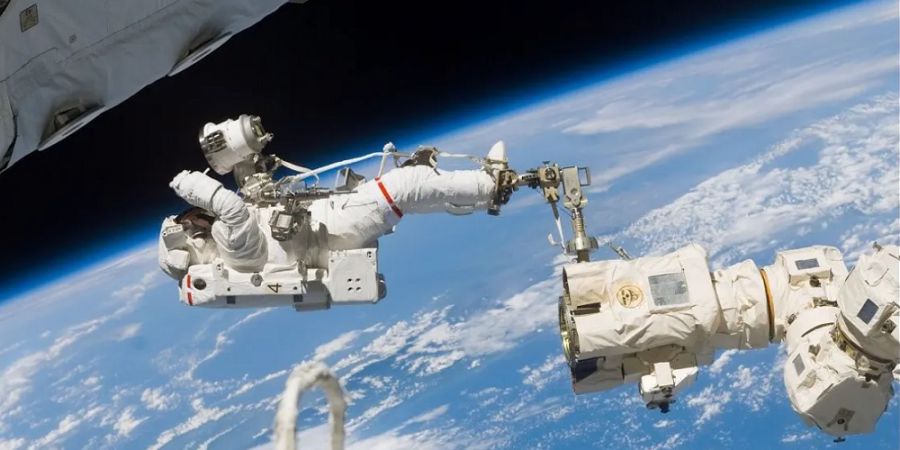NASA astronauts
An astronaut (from the Ancient Greek ἄστρον (astron), meaning ‘star’, and ναύτης (nautes), meaning ‘sailor’) is a person trained, equipped, and deployed by a human spaceflight program to serve as a commander or crew member aboard a spacecraft. Although generally reserved for professional space travelers, the term is sometimes applied to anyone who travels into space, including scientists, politicians, journalists, and tourists.
“Astronaut” technically applies to all human space travelers regardless of nationality. Comparatively recent developments in crewed spaceflight made by China have led to the rise of the term taikonaut (from the Mandarin “tàikōng” (太空), meaning “space”), although its use is somewhat informal and its origin is unclear. In China, the People’s Liberation Army Astronaut Corps astronauts and their foreign counterparts are all officially called hángtiānyuán (航天员, meaning “heaven navigator” or literally “heaven-sailing staff”).
Astronauts 1961-1972
| Country | Spacecraft | Launching date | Astronauts | Revolutions | Flight time | Flight highlights |
| R | Vostok 1 | 12-4-1961 | Gagarin | 1 | 1 hr. 48 mins. | First manned flight. |
| US | Mercury-Redstone 3 | 5-5-1961 | Shepard | Sub-orbinal | 15 mins. | First American in space. |
| US | Mercury-Redstone 4 | 21-7-1961 | Grissom | Sub-orbinal | 16 mins. | Capsule sank. |
| R | Vostok 2 | 6-8-1961 | Titov | 16 | 25 hrs. 18 mins. | More than 24 hours in space |
| US | Mercury-Atlas 6 | 20-2-1962 | Glenn | 3 | 4 hrs. 55 mins. | First American in orbit. |
| US | Mercury-Atlas 7 | 24-5-1962 | Cartenter | 3 | 4 hrs. 56 mins. | Landed 250 miles from target. |
| R | Vostok 3 | 11-8-1962 | Nikolayev | 60 | 94 hrs. 22 mins. | First group flight. (Vostok 3 and 4) |
| R | Vostok 4 | 12-8-1962 | Popovich | 45 | 70 hrs. 57 mins. | Came within 3.1 miles of Vostok 3 on first orbit. |
| US | Mercury-Atlas 8 | 3-10-1962 | Schirra | 6 | 9 hrs. 13 mins. | Landed 5 miles from target. |
| US | Mercury-Atlas 9 | 15-5-1963 | Cooper | 22 | 34 hrs. 20 mins. | First long flight by an American. |
| R | Vostok 5 | 14-6-1963 | Bykovsky | 76 | 119 hrs. 06 mins. | Second group flight. (Vostok 5 and 6) |
| R | Vostok 6 | 16-6-1963 | Tereshkova | 45 | 7 hrs. 50 mins. | Passed within 3 miles of Vostok 5; first moman in space. |
| R | Voskhod 1 | 12-10-1964 | Komarov, Feoktiskov, Yegorov | 15 | 24 hrs. 17 mins. | First 3-man craft. |
| R | Voskhod 2 | 18-3-1965 | Leonov, Belyayev | 16 | 26 hrs. 02 mins. | First man outside spacecraft in 10-minute “walk”. (Leonov). |
| US | Gemini 3 | 23-3-1965 | Grissom, Young | 3 | 4 hrs. 53 mins. | First manned orbital maneuvers. |
| US | Gemini 4 | 3-6-1965 | McDivitt, White | 62 | 97 hrs. 48 mins. | 21-minute “spacewalk” (White). |
| US | Gemini 5 | 21-8-1965 | Cooper, Conrad | 120 | 190 hrs. 56 mins. | First extended manned flight. |
| US | Gemini 7 | 4-12-1965 | Borman, Lovell | 206 | 330 hrs. 35 mins. | Longest space flight. |
| US | Gemini 6-A | 15-12-1965 | Schirra, Stafford | 16 | 25 hrs. 52 mins. | Rendezvous within 1 foot of Gemini 7. |
| US | Gemini 8 | 16-3-1966 | Armstrong, Scott | 6,5 | 10 hrs. 42 mins. | First docking to Agena target; mission cut short. |
| US | Gemini 9-A | 3-6-1966 | Stafford, Cernan | 44 | 75 hrs. 21 mins. | Rendezvous, extra-vehicular activity, precision landing. |
| US | Gemini 10 | 18-7-1966 | Young, Collins | 43 | 70 hrs. 47 mins. | Rendezvous with 2 targets; Agena package retrieved. |
| US | Gemini 11 | 12-9-1966 | Conrad, Gordon | 44 | 74 hrs. 17 mins. | Rendezvous and docking. |
| US | Gemini 12 | 11-11-1966 | Lovell, Aldrin | 59 | 94 hrs. 33 mins. | 3 successful extra-vehicular trips. |
| R | Soyuz 1 | 23-4-1967 | Kamarov | 17 | 26 hrs. 40 mins. | Heaviest manned craft; crashed killing Kamarov. |
| US | Apollo 7 | 11-10-1968 | Schirra, Eisele, Walter | 163 | 260 hrs. 09 mins. | First manned flight of Apollo spacecraft. |
| R | Soyuz 3 | 26-10-1968 | Beragovoi | 60 | 94 hrs. 51 mins. | Rendezvous with manned Soyuz 2 |
| US | Apollo 8 | 21-12-1968 | Borman, Lovell, Anders | Lunar orbital 10 | 147 hrs. 00 mins. | First manned voyage around the moon. |
| R | Soyuz 4 | 15-1-1969 | Shatalov | 45 | 71 hrs. 14 mins. | Rendezvous with Soyuz 5. |
| R | Soyuz 5 | 15-1-1969 | Volynov, Teliseyev, Khrunov | 46 | 72 hrs. 46 mins. | Rendezvous with Soyuz 4; Yeliseyev and Khrunov trandfer to Soyuz 4. |
| US | Apollo 9 | 3-3-1969 | McDivitt, Scott, Schweickart | 151 | 241 hrs. 01 mins. | Low earth orbit, docking with Lunar Module (LM). |
| US | Apollo 10 | 18-5-1969 | Stafford, Cernan, Young | Lunar orbital 31 | 192 hrs. 03 mins. | Descent to within 9 miles of moon. |
| US | Apollo 11 | 16-7-1969 | Armstrong, Aldrin, Collins | Lunar orbital 31 | 195 hrs. 18 mins. | Armstrong and Aldrin on the moon. Time spent on moon 21 hrs. 38 mins. |
| US | Apollo 12 | 14-11-1969 | Conrad, Bean, Gordon | Lunar orbital 45 | 244 hrs. 36 mins. | Living and working on the moon. ALSEP station instruments. |
| US | Apollo 13 | 11-4-1970 | Lovell, Haise, Swigert | Lunar orbital 01 | 142 hrs. 54 mins. | Blast oxygen tank, did not land on the moon. |
| US | Apollo 14 | 31-1-1971 | Shepard, Mitchell, Roosa | Lunar orbital 34 | 216 hrs. 02 mins. | Long walk on the moon, wheelbarrow. |
| US | Apollo 15 | 25-7-1971 | Scott, Irwin, Worden | Lunar orbital 74 | 295 hrs. 11 mins. | Focus on science, lunar vehicle. |
| US | Apollo 16 | 16-4-1972 | Young, Duke, Mattingly | Lunar orbital 64 | 265 hrs. 51 mins. | Extended stay on the moon, lunar vehicle. |
| US | Apollo 17 | 7-12-1972 | Cernan, Schmitt, Evans | Lunar orbital 75 | 301 hrs. 51 mins. | Longest crewed lunar landing mission (12 days 14 hours), greatest distance from a spacecraft during an extravehicular activity of any type (7.6 kilometers (4.7 mi)), longest total lunar surface extravehicular activities (22 hours 4 minutes), largest lunar sample return (approximately 115 kg or 254 lb), longest time in lunar orbit (6 days 4 hours), and most lunar orbits (75). Cernan last Apollo astronaut on the moon (14-12-1972). |
Astronaut team (2022)
Team
- Chief Astronaut: Reid Wiseman.
- 42 active astronauts, 10 candidate astronauts.
Training
- Landing vertical (navy helicopter).
- Landing in snow (navy helicopter).
- Southpole at the Moon and Mars with weird sun-angles (VR).
- Geology (Mars geology time-scale and collecting samples) (Iceland).
- Space training (ISS).
- Moon and Mars surface (swimmingpool).
- Orion (Crew Trainer at JSC).
Artemis I (16-11-2022)
- Male torso called Commander Moonikin Campos. In commander’s seat to provide data on what crew members may experience in flight. In Orion Crew Survival System suit. Named after a key player in bringing Apollo 13 safely back to Earth. Arturo Campos was an electrical engineer who developed a plan to provide the command module with enough electrical power to navigate home safely after an oxygen tank aboard the service module of the Apollo spacecraft ruptured. Commander Moonikin Campos is outfitted with sensors to provide data on what crew members may experience in flight, continuing Campos’ legacy of enabling human exploration in deep space.
- Female torso called Helga. To measure radiation. Without radiation protection vest.
- Female torso called Zohar. To measure radiation. With radiation protection vest (AstroRad).
Artemis II (2024)
- 03-04-2023 NASA reveals the crew for Artemis II. NASA announced that former U.S. Navy fighter pilots Reid Wiseman and Victor Glover, veteran space station astronaut Christina Koch, and rookie Canadian astronaut Jeremy Hansen will crew the Artemis 2 mission to fly around the far side of the moon as soon as late next year (2024), a test flight that will carry the foursome farther from Earth than any humans in history.
- 01-07-2023 Start training (18 months). Kick-off by Charles Duke (Apollo 16). All of these astronauts were born after Charles Duke’s landing on the moon in 1972.
- 02-07-2023 First lessons: Lunar orbital mechanics (for Earth horizon navigation).
- Reid Wiseman, commmander, USA
- Victor Glover, pilot, USA
- Christina Koch, mission specialist, USA
- Jeremy Hansen, mission specialist, Canada
Artemis III (Moon landing)
- t.b.a.
Artemis IV (09-2028)
- ESA Astronaut, t.b.a. Alexander Gerst (Germany)?
Artemis V (09-2029)
- ESA Astronaut t.b.a. Thomas Pesquet (France)?
Footnote
- Sources: Space dashboard, Aerospace history, funkystuff.org
- Outgoing: NASA
- Keywords: Artemis astronauts, crew




